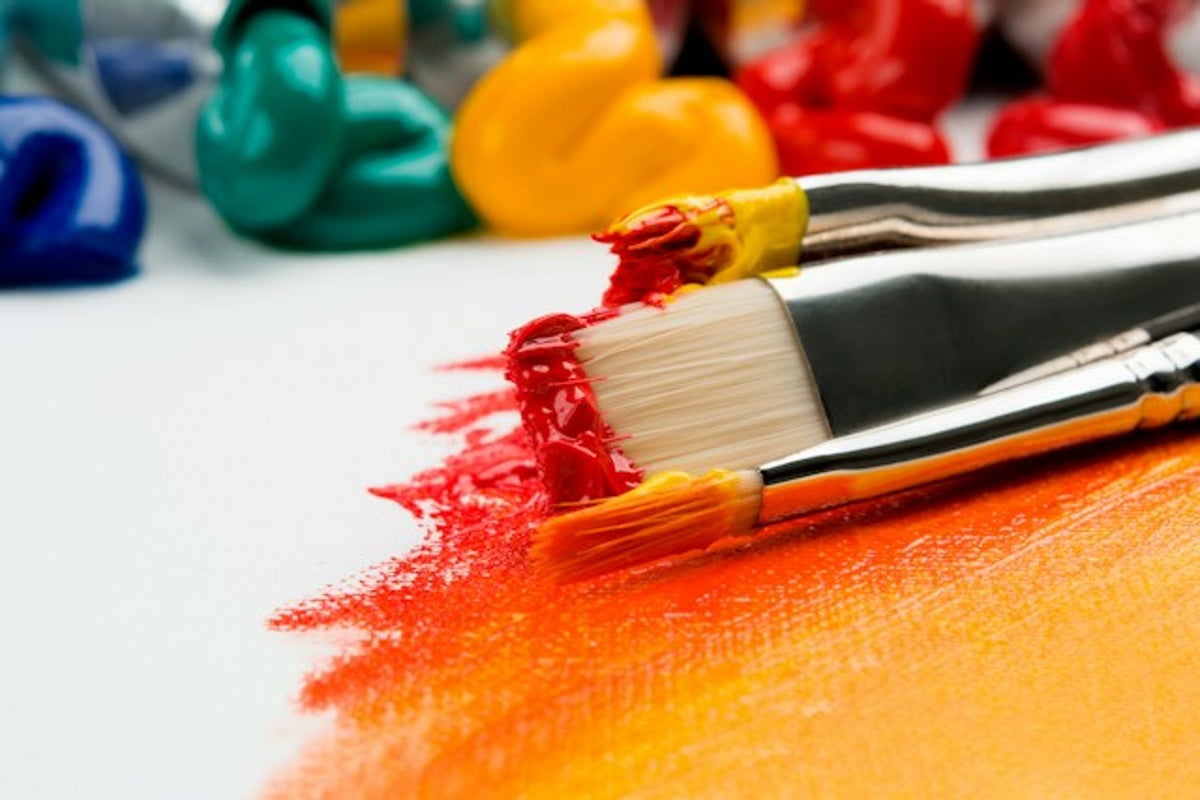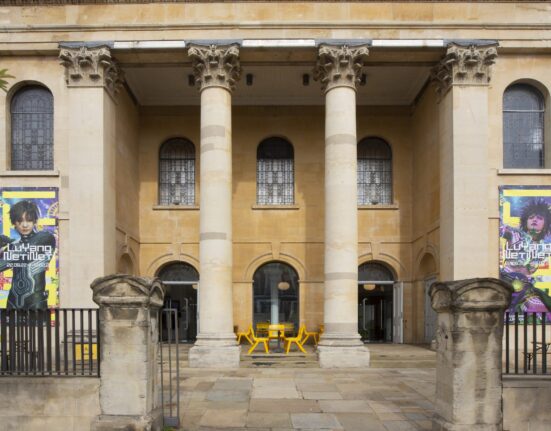Art can be an exciting addition to your collection of investments. It has the potential for strong returns but also allows you to collect important pieces for cultural preservation. It lets you foster creativity by investing in contemporary artists.
However, evaluating art for investment purposes isn’t as easy as evaluating a stock of mutual funds. If you’re looking to add art to your portfolio, you’ll want to keep out for these top best artists to invest in.
Understanding the Art Market
In 2022, the art market saw record-breaking sales and growth, much like the traditional market. This resulted from a sudden increase in spending as in-person activity began to resume. In 2023, sales declined significantly. During the first half of 2023, the art market underperformed compared to the second half of 2020, 2021 and 2022, although it was on track compared to overall sales in 2018 and 2019.
The market appeared to correct itself in 2023 from the soaring highs brought by 2021 and 2022. Going into 2024, sales are strong, especially in historical fine art and contemporary artists. Market trends change, so it’s best to stay up-to-date on the state of the market to determine the best times to buy and sell, as well as the styles and artists you should keep an eye on.
Best Artist to Invest in Right Now
If you’re heading to an auction or gallery, here are some of the best artists to invest in that you should keep an eye on.
1. Banksy
Banksy is one of the most prominent names in art today. His art first appeared on the streets of Bristol, then spread throughout London and the rest of the world. Though many of the pieces are now on canvas, they still contain a graffiti-style influence and typically reference politics and activism. Banksy is considered a blue-chip artist, and his pieces have a great track record of increasing in value over time.
2. Nicholas Party
Nicholas Party is a popular contemporary artist whose pieces can be recognized by vivid colors and images of large heads and distinct, intense eyes. A 2019 piece was just sold for $600,000, proving strong demand for his pieces in the market. He also just signed onto Hauser & Wirth Gallery.
3. Dana Schutz
Dana Schutz is an American artist whose colorful and abstract gestural images have taken the art world by storm. She’s had her work displayed in galleries around the world and the Museum of Modern Art. A 2019 piece by Dana Schutz sold for $2 million, against an estimate of $300,000 – $400,000. Her affinity for telling stories through her figurative art has captured the attention of art investors.
4. Picasso
Picasso is a household name, whether you’re attuned to the art world or not. His work still dominates the market and continues to climb in value. He spearheaded the Cubism movement, and his art defined the Modern Art period. Recently, one of his pieces sold for $100 million. If you can find a Picasso piece, it’ll likely make a great addition to your portfolio.
5. Andy Warhol
Andy Warhol is one of the most popular blue-chip artists on the market today. He was a leader in the 1960’s Pop Art movement, producing famous works such as “Campbell’s Soup Cans” and “Shot Marilyn’s.” Many of his pieces explore the artistic expression behind advertising and celebrity. He’s produced some of the highest-selling art on the market, and he has a museum named after him in Pittsburgh, where he grew up.
6. Birgit Jürgenssen
Birgit Jürgenssen is an Austrian artist who plays with several mediums, such as painting, photography and graphic design. Her pieces focus on the female body, including self-portraits and a photo series. They often make statements on the way women are seen in society and are the reason she is considered a leader in the feminist art movement. Her art has sold for several thousand dollars in auction houses.
7. Stik
As his name suggests, Stik’s art comprises detailed stick figures that often portray emotions like loneliness and vulnerability. Like Banksy, Stik got his start as a street artist in London. His stick figures are spread across the city. In 2013, the BBC partnered with him to hand out 75,000 free prints to raise sympathy for the homeless. Now you can find his art on canvases selling for twice their estimates at auction houses.
8. Stony
Stony is a unique contemporary British artist who blends urban and street art styles with abstraction. He turned to art to express himself and his struggles with autism and dyslexia. In addition to art, he also raced cars, opened several restaurants and created a record label. He died in 2022, and many of his later works focused on his fight with cancer. His art is still popular in the market and continues to increase in value.
How to Select the Best Artists to Invest In
If you’re trying to determine if an artist is worth an investment, you’ll want to consider the following factors.
- Artistic reputation and recognition: Before purchasing a piece, do some research on the artist. Are they well-known in the art market? Look at where their art has been featured and if their pieces are sought after by collections. The better the artist’s reputation, the more valuable their pieces will be.
- Consistency and quality of their work: You’ll also want to research their whole portfolio, not just the piece you’re considering buying. Ensure the quality of their art remains consistent. The higher the quality of art they produce, the more valuable the individual pieces will be. Also, research how their art has increased in value after the initial sale.
- Market demand and collector interest: Demand and interest in the artist will determine the value of their artwork. The value of a piece may grow as demand for it and the artist increases. Before investing in painting, try to determine whether the demand is high and if it is likely to increase over time.
- Career trajectory and potential for growth: This is especially important if you are investing in an up-and-coming artist. Consider how well-received their art is and if they may continue to grow more popular over time. Investing in new artists can be risky, so you’ll want to ensure they’re on an upward trend and that demand for their pieces will grow in popularity over time.
Factors Impacting the Value of Art
The value of a work of art is determined by more than just its quality. Market trends play a huge role. With high consumer confidence, investors will be more likely to spend more on art investments. But times of recession and uncertainty can make investors hesitant to make big purchases.
Additionally, trends change. One style could be popular for a long time and then suddenly be less sought after. It’s important to stay up-to-date on the trends by researching what styles and artists are in demand at the moment.
Art will typically trade hands a couple of times between investors and auctions. Verify the artwork’s provenance, which is its recorded ownership history. This can help you verify its authenticity and value. It’s also recommended to work with an art appraiser before making investments.
Tips for Investing in Art
Creating a successful art portfolio can be challenging. Here are some recommendations for investing in art.
- Diversify your collection: Just like creating a portfolio of stocks, diversification is key in collecting art. Having a diverse art portfolio can help hedge against changing trends and artist sentiment.
- Monitor market trends: Stay up-to-date on investment trends and art market news. This research will help you identify what styles of artists are valuable at the moment so that you can determine the best times to buy and sell and better manage your investments.
- Identify where to buy and sell: Research reputable online and in-person auctions and galleries. You can also attend events and sales to connect with other art collectors to increase your network.
- Consider long-term investment goals: Determine what your goal is for your investments. This will help you create a strategy that can inform how and when you buy or sell, as well as the level of risk you’re willing to take.
- Work with art professionals: Seek an informed, professional opinion before making a purchase. Professionals will be able to verify the authenticity and value of a piece and also help you form an overall strategy that works for you.
Other Ways to Invest in Art
Purchasing blue-chip art may not be accessible to every investor, but there are still ways to get exposure to the art market. One option is to invest in an art fund. These funds are similar to other investment funds, where you invest in a professionally managed portfolio of art.
Another option is to use an art investing platform such as Masterworks and Yieldstreet. These platforms allow you to invest in fractional shares of art so you can gain exposure at a much lower minimum investment.
Build a Diverse Portfolio
Art can be a great way to diversify your investment portfolio away from traditional markets. Plus, it can be a fun and rewarding pastime and allows you to collect beautiful, important pieces of art. As with any investment, it’s important to do your research. Identify the best artists to invest in, stay updated on market research and get an expert opinion to create a successful portfolio.
Frequently Asked Questions
A
Artists such as Picasso, Banksy and Andy Warhol have strong reputations and may make a good investment.
A
Many people invest in art because of the chance of high returns and the satisfaction found in contributing to art and culture.
A
Art produced by popular and in-demand artists may increase in value over time.






